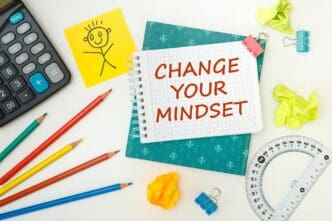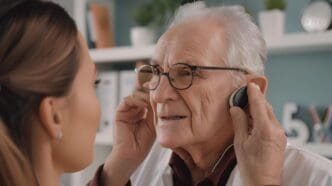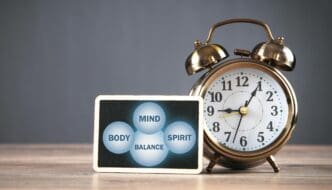Hoarding Disorder, a complex mental health condition that compels individuals to acquire and save a large number of items regardless of their value, affects millions of Americans, creating significant health and safety risks. For residents in Miami-Dade County, understanding this disorder is the first step toward accessing a network of specialized local resources—from therapists trained in cognitive-behavioral techniques to community agencies and support groups—designed to help individuals and their families navigate a path toward safety and recovery. The key is recognizing that hoarding is not a character flaw or a choice but a treatable illness, and compassionate, evidence-based help is available to manage its overwhelming symptoms and reclaim one’s life and living space.
Understanding Hoarding Disorder Beyond the Clutter
At its core, Hoarding Disorder is much more than simple messiness or collecting. The American Psychiatric Association officially recognized it as a distinct diagnosis in the Diagnostic and Statistical Manual of Mental Disorders (DSM-5), separating it from Obsessive-Compulsive Disorder (OCD), with which it is often associated. The condition is defined by a trifecta of core symptoms that create significant impairment in a person’s life.
First is the persistent difficulty discarding or parting with possessions, regardless of their actual monetary or practical value. This isn’t about laziness; it’s rooted in a powerful, perceived need to save the items and the extreme distress associated with the thought of letting them go. An old newspaper, a broken appliance, or a stack of junk mail can feel as essential to the individual as a cherished photograph.
This difficulty discarding items leads directly to the second symptom: the accumulation of possessions that congest and clutter active living areas, compromising their intended use. A kitchen may become unusable for cooking, a bathtub may be filled with belongings, and a bed may be impossible to sleep in. To be diagnosed, the clutter must be extensive enough that it prevents the normal use of a space, not just tucked away in a basement or attic.
Finally, the hoarding must cause clinically significant distress or impairment in social, occupational, or other important areas of functioning, including maintaining a safe environment for oneself and others. This impact is profound, leading to social isolation, family conflict, and serious health and safety hazards like fire risks, pest infestations, and trip-and-fall dangers.
The Psychology Driving the Disorder
The reasons behind hoarding are multifaceted and not yet fully understood, but researchers point to a combination of psychological, genetic, and neurological factors. Many individuals with the disorder exhibit specific deficits in information processing. They may struggle with executive functions like attention, categorization, and decision-making, making the simple act of sorting mail an overwhelming task.
Emotional attachment to objects is also a powerful driver. Possessions are often imbued with deep personal meaning, representing happy memories, important people, or potential future usefulness. For some, objects provide a sense of comfort and security, and the thought of discarding them feels like losing a part of themselves or being wasteful.
Hoarding Disorder frequently co-occurs with other mental health conditions. Research shows high rates of comorbidity with Major Depressive Disorder, social anxiety, and Generalized Anxiety Disorder. While once considered a subtype of OCD, many individuals with Hoarding Disorder do not have the intrusive, unwanted thoughts typical of OCD. There is also a notable link to Attention-Deficit/Hyperactivity Disorder (ADHD), given the shared challenges with executive functioning.
The Ripple Effect: How Hoarding Impacts Lives
The consequences of hoarding extend far beyond the individual, creating a ripple effect that touches families, friends, and the wider community. For the person struggling, the shame and embarrassment often lead to profound social isolation. They may refuse to let anyone into their home, cutting off relationships with loved ones and service providers.
Family members often experience a rollercoaster of emotions, from deep concern and frustration to anger and helplessness. They may try to help by staging a forced “cleanout,” an approach that is almost always counterproductive. Without addressing the underlying psychological issues, a forced cleanout can be deeply traumatic for the individual and the items are typically re-accumulated quickly. The strain can destroy family bonds and leave caregivers feeling burnt out and hopeless.
From a public health perspective, severe hoarding poses a serious risk. Over-cluttered homes are significant fire hazards, blocking exits and providing fuel for a fire to spread rapidly. They can also lead to unsanitary conditions, attracting pests and mold, which can affect neighbors in apartment buildings and multi-family dwellings. In severe cases, hoarding can lead to code violations, eviction, and even homelessness.
Finding Help: A Guide to Resources in Miami-Dade County
Navigating the path to recovery requires a multi-pronged approach that addresses both the psychological drivers and the physical clutter. Fortunately, Miami-Dade County has a range of resources available. The most effective interventions are compassionate, patient, and focus on harm reduction and skill-building rather than punishment.
Step 1: Professional Mental Health Treatment
The gold-standard treatment for Hoarding Disorder is a specialized form of Cognitive Behavioral Therapy (CBT). This therapy is not about simply talking; it’s an active, skills-based approach that helps individuals understand the thoughts and behaviors driving the hoarding and develop new ways of coping.
Key components of CBT for hoarding include:
- Psychoeducation: Learning about the disorder to reduce shame and build motivation for change.
- Skills Training: Developing practical skills in problem-solving, decision-making, and organizing. A therapist might help a client practice sorting items into categories: keep, discard, or donate.
- Exposure and Response Prevention: Gently and systematically practicing discarding items, starting with those that cause the least distress and gradually working up to more challenging objects. This helps reduce the anxiety associated with letting go.
- Cognitive Restructuring: Identifying and challenging the unhelpful beliefs about possessions, such as “I might need this someday” or “Throwing this away is wasteful.”
To find a qualified therapist in Miami-Dade, you can start with online directories like Psychology Today, which allows you to filter by location, insurance, and specialty (e.g., “Hoarding” or “OCD and Related Disorders”). The psychology and psychiatry departments at the University of Miami and Florida International University (FIU) may also have clinics or referral lists for specialists in the community. Your primary care physician is another excellent source for a referral.
Step 2: Building a Support System
Recovery from hoarding is a marathon, not a sprint, and ongoing support is crucial. Support groups offer a non-judgmental space where individuals and their families can share experiences and strategies.
- NAMI Miami-Dade: The local chapter of the National Alliance on Mental Illness is a valuable resource for support groups and educational programs for both individuals with mental health conditions and their families.
- Online Communities: While in-person groups can be powerful, online forums and support groups offer anonymity and 24/7 access to peer support, which can be a vital lifeline, especially in the early stages.
Step 3: Accessing Community and Specialized Services
Treating the mind is only half the battle; addressing the physical environment requires a different kind of help. It’s critical to engage professionals who are trained to work with sensitivity and respect.
- Professional Organizers: Look for organizers who specialize in “chronic disorganization” or have specific training in hoarding. The National Association of Productivity & Organizing Professionals (NAPO) has a directory to find certified professionals in South Florida. They can provide hands-on, non-judgmental coaching to help sort and organize the home, but they are not a substitute for therapy.
- Specialized Cleaning Services: For severe cases involving biohazards or overwhelming clutter, specialized remediation companies are necessary. These are not standard cleaning services; they are trained to handle extreme situations safely and discreetly.
- Miami-Dade County Community Action and Human Services Department: This agency provides a wide array of services, including case management and assistance for vulnerable populations like seniors and adults with disabilities. They can be a key point of contact for connecting individuals with the appropriate social services.
- Adult Protective Services (APS): If you are concerned that a vulnerable adult is living in a situation that poses an immediate threat to their health and safety due to hoarding, APS may need to be involved. This is a serious step, but their primary goal is to ensure the person’s safety and connect them with necessary services.
How to Support a Loved One with Hoarding Disorder
If you have a friend or family member who is hoarding, your support can be instrumental, but it must be approached with empathy and patience. Avoid criticism, arguments, and threats. Forcing a cleanout will likely backfire, deepening their distress and mistrust.
Instead, focus on harm reduction. Express your concern for their safety, not the state of their house. Help them create clear pathways to exits, check that smoke detectors are working, and address any immediate sanitary issues. Celebrate small victories, like clearing off a single chair or sorting through one bag of mail.
Offer to help them find professional help. You could say, “I’m worried about your safety, and I’ve heard there are therapists who specialize in helping people who have trouble letting go of things. Would you be open to me helping you find one?” Your role is to be a supportive ally, not a rescuer or an enforcer.
A Path Forward
Hoarding Disorder is a deeply challenging condition, but it is not a life sentence. With the right combination of evidence-based therapy, practical support, and compassionate understanding, individuals can learn to manage their symptoms and improve their quality of life. For those in Miami-Dade, the journey begins by reaching out to the dedicated professionals and community resources ready to help, transforming a home from a source of distress into a place of safety and peace.








